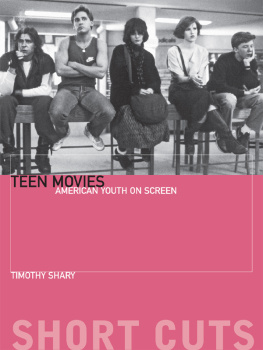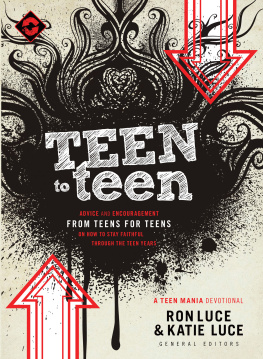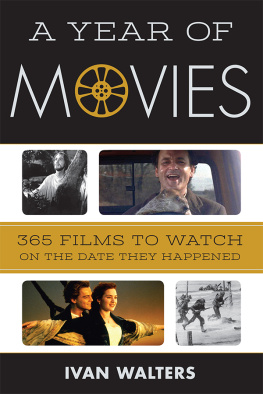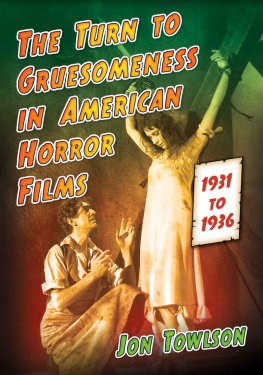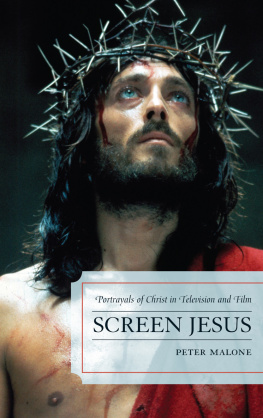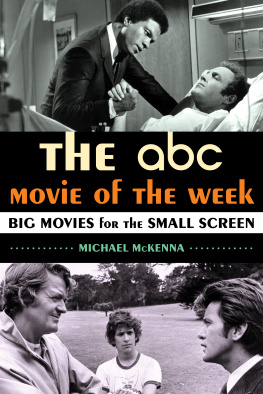SHORT CUTS
INTRODUCTIONS TO FILM STUDIES
OTHER TITLES IN THE SHORT CUTS SERIES
THE HORROR GENRE: FROM BEELZEBUB TO BLAIR WITCH Paul Wells
THE STAR SYSTEM: HOLLYWOODS PRODUCTION OF POPULAR IDENTITIES Paul McDonald
SCIENCE FICTION CINEMA: FROM OUTERSPACE TO CYBERSPACE Geoff King and Tanya Krzywinska
EARLY SOVIET CINEMA: INNOVATION, IDEOLOGY AND PROPAGANDA David Gillespie
READING HOLLYWOOD: SPACES AND MEANINGS IN AMERICAN FILM Deborah Thomas
DISASTER MOVIES: THE CINEMA OF CATASTROPHE Stephen Keane
THE WESTERN GENRE: FROM LORDSBURG TO BIG WHISKEY John Saunders
PSYCHOANALYSIS AND CINEMA: THE PLAY OF SHADOWS Vicky Lebeau
COSTUME AND CINEMA: DRESS CODES IN POPULAR FILM Sarah Street
MISE-EN-SCNE: FILM STYLE AND INTERPRETATION John Gibbs
NEW CHINESE CINEMA: CHALLENGING REPRESENTATIONS Sheila Cornelius with Ian Haydn Smith
SCENARIO: THE CRAFT OF SCREENWRITING Tudor Gates
ANIMATION: GENRE AND AUTHORSHIP Paul Wells
WOMENS CINEMA: THE CONTESTED SCREEN Alison Butler
BRITISH SOCIAL REALISM: FROM DOCUMENTARY TO BRIT GRIT Samantha Lay
FILM EDITING: THE ART OF THE EXPRESSIVE Valerie Orpen
AVANT-GARDE FILM: FORMS, THEMES AND PASSIONS Michael OPray
PRODUCTION DESIGN: ARCHITECTS OF THE SCREEN Jane Barnwell
NEW GERMAN CINEMA: IMAGES OF A GENERATION Julia Knight
EARLY CINEMA: FROM FACTORY GATE TO DREAM FACTORY Simon Popple and Joe Kember
MUSIC IN FILM: SOUNDTRACKS AND SYNERGY Pauline Reay
FEMINIST FILM STUDIES: WRITING THE WOMAN INTO CINEMA Janet McCabe
MELODRAMA: GENRE STYLE SENSIBILITY John Mercer and Martin Shingler
FILM PERFORMANCE: FROM ACHIEVEMENT TO APPRECITATION Andrew Klevan
NEW DIGITAL CINEMA: REINVENTING THE MOVING IMAGE Holly Willis
THE MUSICAL: RACE, GENDER AND PERFORMANCE Susan Smith
FILM AND PHILOSOPHY: IMAGES OF WISDOM Adrian Page
FILM NOIR: FROM FRITZ LANG TO FIGHT CLUB Mark Bould
THE NEW HOLLYWOOD: FROM BONNIE AND CLYDE TO STAR WARS Peter Krmer
DOCUMENTARY: THE MARGINS OF REALITY Paul Ward
TEEN MOVIES
AMERICAN YOUTH ON SCREEN
TIMOTHY SHARY
WALLFLOWER
LONDON and NEW YORK
A Wallflower Book
Published by
Columbia University Press
Publishers Since 1893
New York Chichester, West Sussex
Copyright Timothy Shary 2005
All rights reserved.
E-ISBN 978-0-231-50160-6
A complete CIP record is available from the Library of Congress
ISBN ISBN 978-1-904764-49-6 (pbk. : alk. paper)
ISBN 978-0-231-50160-6 (e-book)
A Columbia University Press E-book.
CUP would be pleased to hear about your reading experience with this e-book at .
CONTENTS
My foremost thanks go to Yoram Allon at Wallflower Press who suggested that I write this book and who has encouraged its development along the way. I also need to thank the University of Texas Press, and my editor there, Jim Burr, for previously publishing my work on youth cinema, which I also utilised here.
Clark University has provided me with research support and the opportunity to teach courses on teen films, most recently with Beth Gale, which has given me a greater understanding of the field. My thanks to Clark, my many intelligent students, and the Higgins School of Humanities, which also provided funding.
One of the most esteemed scholars in teen film studies, Jon Lewis of Oregon State University, gave the entire manuscript a thorough reading and offered many suggestions for which I am very grateful. I further thank Ilana Nash of Western Michigan University for her advice on the introductory chapters. I also thank my colleagues who have shared their ideas on teen cinema over the years, which have influenced my own work: Carolyn Anderson, Christine Holmlund, Mary Kearney, Jon Lupo, Bob Miklitsch, Marty Norden, Murray Pomerance, Catherine Portuges, Bennett Schaber, Alexandra Seibel and Louisa Stein.
Most of the images in this book were gathered through collectors of movie memorabilia from all over the world. I offer my thanks to them, and my encouragement to keep film history alive.
This book is dedicated to Becky, who keeps me young.
Adolescence and motion pictures were both discovered as the nineteenth century was growing into the twentieth. In 1904, G. Stanley Hall wrote his groundbreaking study Adolescence: Its Psychology, and Its Relations to Physiology, Anthropology, Sociology, Sex, Crime, Religion, and Education, an ambitious first effort to catalogue what was then being identified as a strange but significant phase of life. At the same time, movie theatres were becoming new fixtures in towns all over America, rapidly changing the social notions of art and even reality. Indeed, until television a half-century later, movies would be the most influential entertainment medium in the world, shaping cultural notions about history, behavior and values. This profound influence was used to convey emotions, sway opinions and represent social groups in both sincere and stereotypical terms.
The impact of movies on the pre-adult population would be swift and sweeping, as moral guardians moved to protect children from the cinemas pervasive influence. Nonetheless, American cinema depicted young characters on screen in wildly inconsistent ways (and rather infrequently at that) until the 1930s, and nothing could prepare the film industry, nor the country, for the emergence of that powerful demographic force that bloomed during and after the Second World War: teenagers.
And one of the reasons the teenage population became more visible was due to the spread of movie theatres, where young people would congregate outside of school hours. Furthermore, an increasing number of children stayed in school until their later teens, thus elongating the duration of their perceived youth.
As with the depiction of any minority group in the media, a question of motivation must be raised: does the industry depict minorities to fulfill the expectations of the majority, to appeal to the minority, or a balance of both? Young people have an especially delicate position as a minority group, since they are generally considered the property of adults until they are almost out of their teen years, and until recently, their access to mass media both in terms of reception and especially production has been restricted by adults. Thus, there would never be a cinematic tradition of movies made by children, unlike many other marginalised groups in US history. The assumption seemed to be that adults could portray the youth experience based on their personal memories and current observations; the only creative input young people actually had was in performing the roles adults designed for them.
Yet Hollywood studios realised that they did need to appeal to the young audience, first through matinee shows that played well to children with or without their parents, and by promoting morally respectable young stars, which fulfilled the expectations of the adult majority. This formula proved adequate until the 1950s, when television rapidly began stealing away the movie audience, and Hollywood responded by making more films aimed directly at youth. In Teenagers and Teenpics (1988), Thomas Doherty argues that this response led to a juvenilisation of American movies that has been persistent ever since the 1950s, with studios capitalising on youth trends and attitudes through movies that more directly and aggressively address the teenage audience. In

